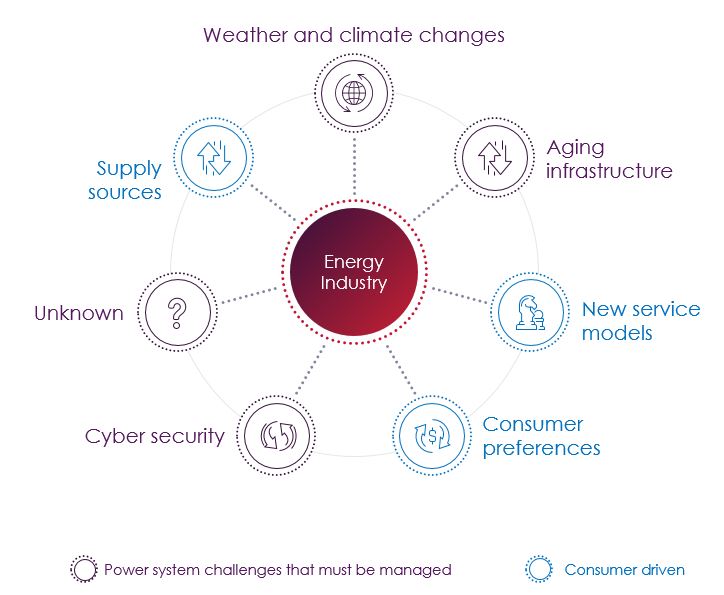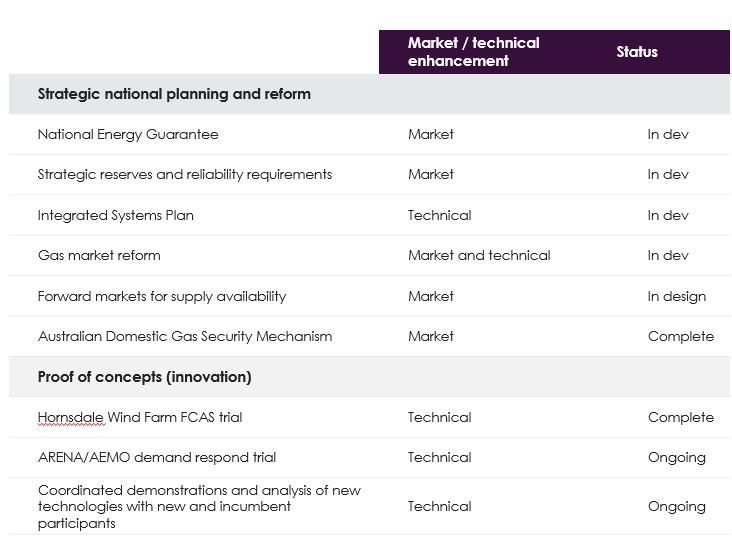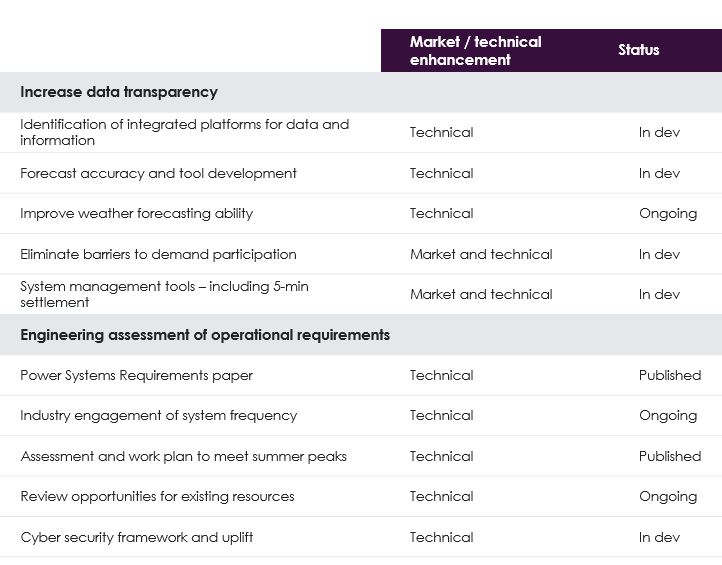At this year’s Australian Energy Week, AEMO Managing Director and Chief Executive Officer Audrey Zibelman outlined the key disruptors that are unleashing an evolutionary change in the energy industry.
To keep you up to speed with the dynamic energy landscape, Energy Live explores the six known disruptors and lays out the plans AEMO has put in place to manage the energy transition while paving the path towards a more cost efficient, secure, low emissions energy future.
The key disruptors we are seeing can be broadly categorised into consumer driven challenges and challenges that the power system is currently facing.
Consumer driven disruptors – consumer preferences, supply sources, new service models
The first major disruptor changing the nature of the energy industry is largely driven by the growth in the number of solar panels mounted on rooftops, driven by the falling costs of solar panels. As previously reported, this is a game changer for AEMO and other system operators worldwide.
The decreasing cost of energy sources like large scale solar and wind, increasing levels of renewable energy investment and changes in technology, including solar thermal and hydrogen, indicates that Australia’s generation mix will continue to change and diversify.
Other consumer-driven changes include the advent of blockchain technologies, and software that dynamically manages energy use. For instance, entities such as Intel and Google are entering the energy market with new products that are vastly different to services offered by traditional players and changing the nature of the system.
AEMO has to ensure all these factors are taken into account, and that we have the right resources to operate the system when keeping the supply and demand in balance – the physics of the power system cannot be negotiated!
Power system challenges that must be managed – climate change, aging infrastructure, cyber security
On the other side of the equation, we have challenges we are grappling with that are beyond our control. Climate change is a good example of such a disruptor. As temperatures rise – the 2017/18 summer was the second-warmest on record nationally – AEMO needs to continue to manage the power system through extreme weather events and through periods where temperatures fluctuate rapidly, making supply and demand more variable and ‘peakier’.
We must remember that Australia’s energy infrastructure was built in the 1950s and around resources located along the coast. Resource supply hubs are moving to renewable zones, and this requires the need for holistic planning to ensure network investment not only connects new generation supply hubs, but is done at the least cost for consumers.
Collaborating to deliver a 21st century system for consumers
This changing context is creating opportunities to collaborate with stakeholders to make the power system more innovative, competitive and efficient for consumers, however the transformation must be considered on an integrated energy system basis, from consumer to supply, and coordinated in an optimal way across the NEM.
To do this, we need to make sure we have
- Adequate supply to meet demand 24 hours a day, 365 days a year.
- A flexible, fast, adaptive, resilient and observable two-way system.
- Power engineering leadership
- Eliminate information asymmetry
- Integrated system development
- Advanced system management
AEMO, in collaboration with the market bodies and participants, is undertaking a body of work to resolve the challenges the energy transition is throwing at us. Broadly divided into the four focus areas of: strategic national planning and reform; innovation and proof of concepts; increasing data transparency; and engineering assessments of operational requirements, the work we are doing will support this energy transformation and deliver a safe, reliable and affordable energy future for all Australian energy consumers.









